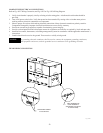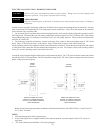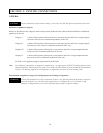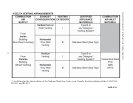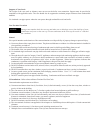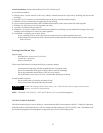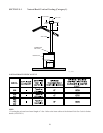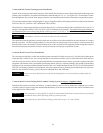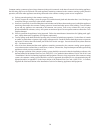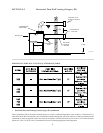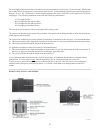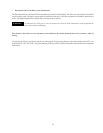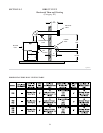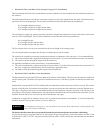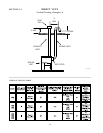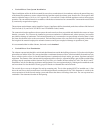Common venting systems may be too large when an existing unit is removed. At the time of removal of an existing appliance,
the following steps must be followed with each appliance remaining connected to the common venting system placed in
operation, while the other appliances remaining connected to the common venting system are not in operation.
a) Seal any unused opening in the common venting system.
b) Visually inspect the venting system for proper size and horizontal pitch and determine there is no blockage or
restriction, leakage, corrosion or other unsafe condition.
c) Insofar as is practical, close all building doors and windows and all doors between the space in which the appliances
remaining connected to the common venting system are located and other spaces of the building. Turn on clothes
dryers and any appliance not connected to the common vent system. Turn on any exhaust fans, such as range
hoods and bathroom exhausts, so they will operate at maximum speed. Do not operate summer exhaust fan. Close
fireplace dampers.
d) Place in operation the appliances being inspected. Follow the manufacturers instructions for lighting each appli-
ance. Adjust thermostat so appliance will operate continuously.
e) Test for spillage at the draft hood relief opening after 5 minutes of main burner operation. Use the flame of a match
or candle, or smoke from a cigarette, cigar or pipe, toilet paper trick. For the Hi-Delta, check the pressure at a pressure
tap located 12 inches above the bottom joint of the first vertical vent pipe. Pressure should be anywhere between
0 to -.1 inch water column.
f) After it has been determined that each appliance remaining connected to the common venting system properly
vents when tested as outlined above, return doors, windows, exhaust fans, fireplace dampers and other gas burning
appliances to their previous conditions of use.
g) Any improper operation of the common venting system should be corrected so that the installation conforms with
the latest edition of the National Fuel Gas Code, ANSI Z223.1, in Canada, the latest edition of CAN/CGA-B 149.1 and
.2 Installation Code for Gas Burning Appliances and Equipment. When re-sizing any portion of the common venting
system, the common venting system should be re-sized to approach the minimum size as determined using the
appropriate tables in Appendix G in the latest edition of the National Fuel Gas Code, ANSI Z223.1, in Canada,
Appendix B of the latest edition of the Installation Code for Gas Burning Appliances and Equipment.
30



